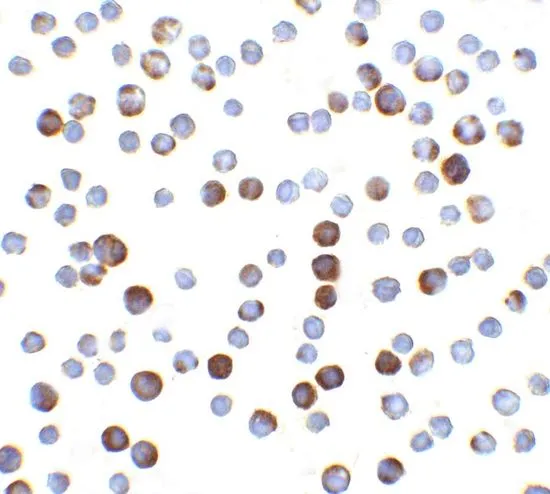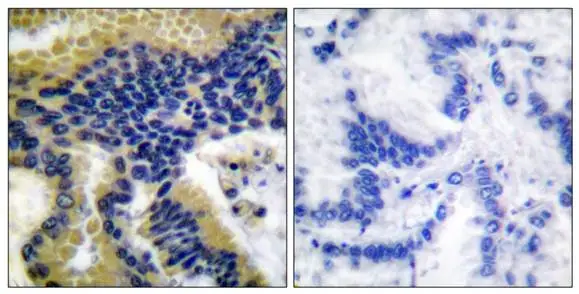
IHC-P analysis of human lung carcinoma tissue using GTX86928 Caspase 9 (cleaved Asp330) antibody. The picture on the right is blocked with the synthesized peptide.
Caspase 9 (cleaved Asp330) antibody
GTX86928
ApplicationsWestern Blot, ImmunoHistoChemistry, ImmunoHistoChemistry Paraffin
Product group Antibodies
ReactivityHuman
TargetCASP9
Overview
- SupplierGeneTex
- Product NameCaspase 9 (cleaved Asp330) antibody
- Delivery Days Customer9
- Application Supplier NoteWB: 1:500~1:1000. IHC-P: 1:50~1:100. *Optimal dilutions/concentrations should be determined by the researcher.Not tested in other applications.
- ApplicationsWestern Blot, ImmunoHistoChemistry, ImmunoHistoChemistry Paraffin
- CertificationResearch Use Only
- ClonalityPolyclonal
- ConjugateUnconjugated
- Gene ID842
- Target nameCASP9
- Target descriptioncaspase 9
- Target synonymsAPAF-3, APAF3, ICE-LAP6, MCH6, PPP1R56, caspase-9, ICE-like apoptotic protease 6, apoptotic protease MCH-6, apoptotic protease activating factor 3, caspase 9, apoptosis-related cysteine peptidase, protein phosphatase 1, regulatory subunit 56
- HostRabbit
- IsotypeIgG
- Protein IDP55211
- Protein NameCaspase-9
- Scientific DescriptionThis gene encodes a member of the cysteine-aspartic acid protease (caspase) family. Sequential activation of caspases plays a central role in the execution-phase of cell apoptosis. Caspases exist as inactive proenzymes which undergo proteolytic processing at conserved aspartic residues to produce two subunits, large and small, that dimerize to form the active enzyme. This protein can undergo autoproteolytic processing and activation by the apoptosome, a protein complex of cytochrome c and the apoptotic peptidase activating factor 1; this step is thought to be one of the earliest in the caspase activation cascade. This protein is thought to play a central role in apoptosis and to be a tumor suppressor. Alternative splicing results in multiple transcript variants. [provided by RefSeq, May 2013]
- ReactivityHuman
- Storage Instruction-20°C or -80°C,2°C to 8°C
- UNSPSC12352203



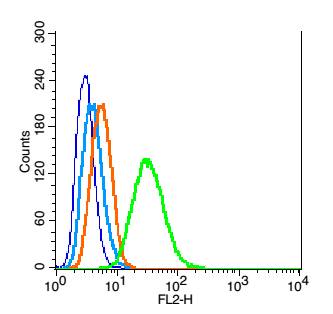

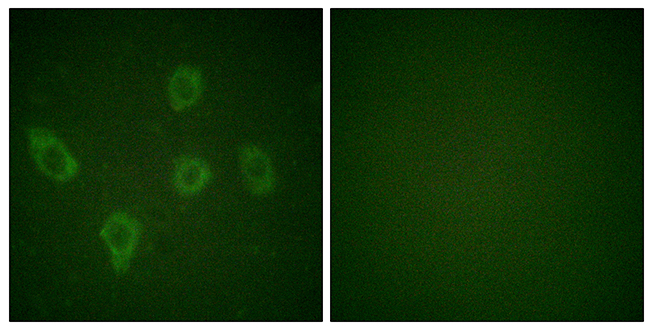
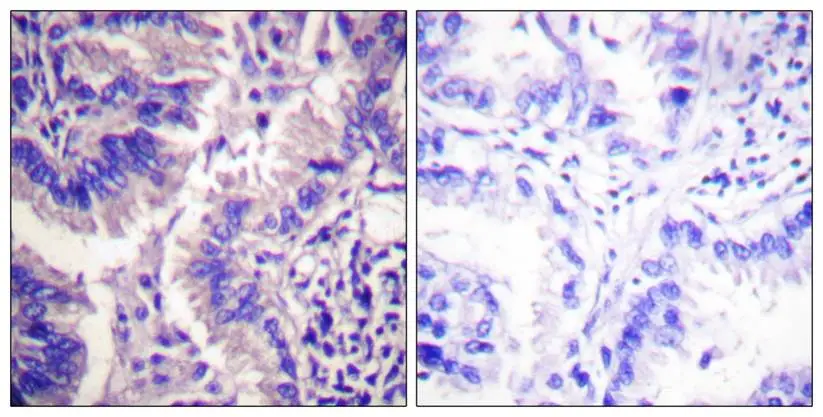
![WB analysis of active 293 (lane 2) and inactive 293 cell lysate(lane 1) using GTX30245 Caspase 9 antibody [LAP6 96-2-22].](https://www.genetex.com/upload/website/prouct_img/normal/GTX30245/GTX30245_1377_WB_w_23060722_265.webp)
